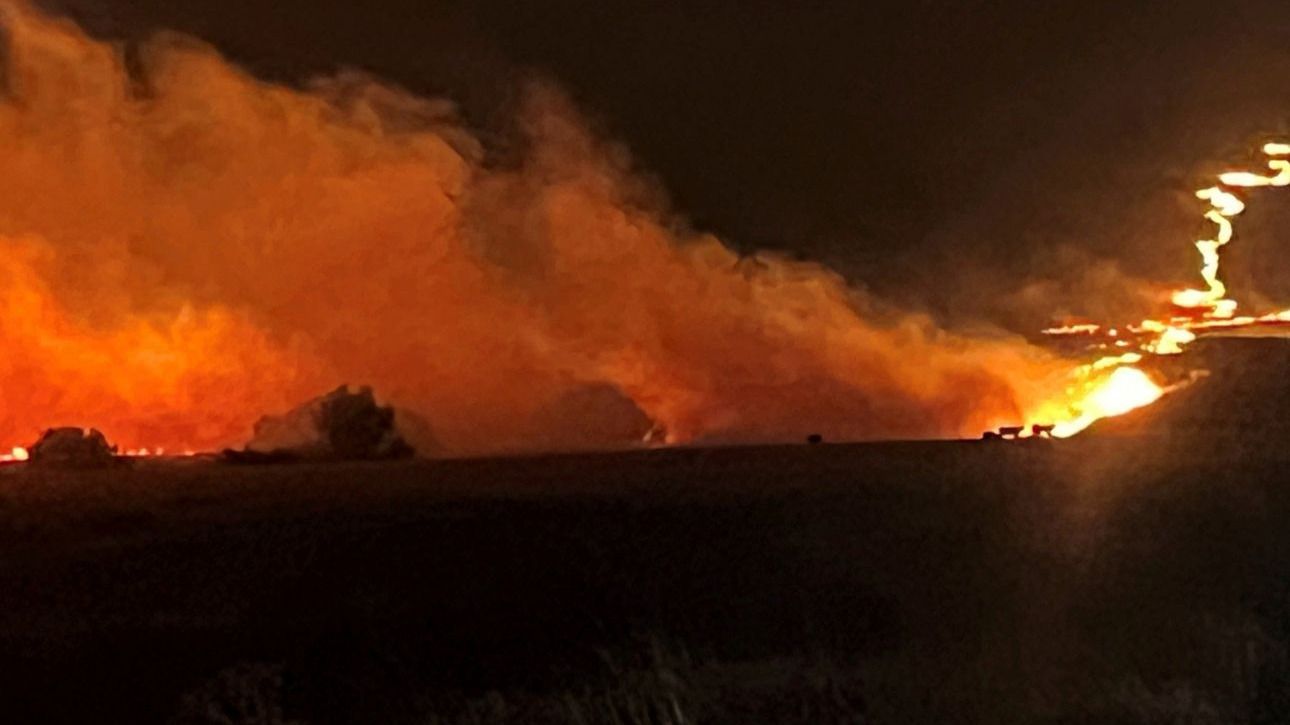California: Fires burning in California, Oregon, Arizona, Washington and other western states, as well as Canada, have filled the skies in regions of the western U.S. with smoke and haze, forcing some affected areas to declare air quality alerts or advisories.
As of Wednesday morning, there were 79 large active wildfires across the country being managed that have burned 1,431,460 acres (579,292 hectares), according to the National Interagency Fire Center. Evacuation orders are in effect for 15 fires in the Northwest, where fires continue to show active to extreme behavior. Communities near several fires in California, the Northern Rockies and the Great Basin are also under evacuation orders.
Where are the Big Fires?
Oregon has 31 large active fires that have burned 791,653 acres (320,371 hectares). The Durkee Fire, the largest active blaze in the U.S., was burning near the Oregon-Idaho border and was 0% contained as of Wednesday morning and had burned nearly 400 square miles (1,036 square kilometers). The Cow Valley, Falls and Lone Rock fires, the next largest, have collectively seared some 404,404 acres (163,657 hectares).
There are 12 active large wildfires in both California and Arizona. In the Golden State, the Lake Fire in Santa Barbara has scorched 38,664 acres (15,647 hectares) and was 90% contained; the 2024 SQF Lightning Complex in Tulare has burned 31,309 acres (12,670 hectares) and was 7% contained; and the Shelly Fire in Siskiyou County that’s charred 15,656 acres (6,336 hectares) was 62% contained. Hot, dry and windy conditions have increase fire activity in some areas, including the Hill Fire in northern California.
The Black Fire east of Phoenix is the largest in Arizona, followed by the Romero Fire west of Dudleyville.
The Pioneer Fire in Washington is the largest in the state at 30,667 acres (12,410.5 hectares). In Montana, the Deadman Fire in Rosebud County grew to 19,982 acres (8,086 hectares) and was 95% contained.
In Canada, there are about 430 active wildfires in British Columbia and 177 in neighboring Alberta, including two that led to the evacuation of up to 25,000 visitors and residents of Canadian Rockies’ largest national park.
Fuels and fire behaviour advisories were in effect for California, Nevada, Southeast and Central Oregon, Southern Idaho and the Utah and Arizona Strip.
Areas Under Air Quality Alerts
Unhealthy air pollution from wildfires have triggered air quality alerts and advisories in regions of the western U.S.
The Oregon Department of Environmental Quality issued air quality alerts or the eastern counties of Harney, Malheur, Grant, Baker and Morrow until further notice. Unhealthy air was reported in cities of Bend and La Pine today and forecaster for tomorrow, with smoke expected to continue degrading air quality in La Pine after Thursday. Smoke from the Durkee Fire was choking the air in Boise, Idaho and beyond. An air quality warning was in effect for the entire region on Wednesday.
In Idaho, air quality advisories were sent out to the central counties of Ada, Canyon, Gem, Owyhee, Payette and Washington.
In North Central Washington, the Colville Reservation, all of Chelan County, plus the Methow Valley down to Brewster in Okanogan County were under air quality alerts until further notice.
And in Canada, authorities issued an air quality advisory for Calgary, Alberta due to the wildfire smoke. The government agency called it high risk and said children and the elderly should avoid outdoor physical exertion.
How to Stay Safe from Wildfire Smoke?
Wildfire smoke can cause unhealthy air quality in areas many miles away from fires. To stay safe, the South Coast Air Quality Management District recommends people start by learning about air quality conditions and forecasts in their area.
Those with an air conditioning system should change filters often, with high-efficiency filters labeled “MERV13” or higher being the most effective at removing smoke particles. Portable HEPA air purifiers also help.
To limit exposure to unhealthy air quality, people should stay indoors with windows and doors closed. Avoid heavy exertion outdoors, using fans or swamp coolers that take air from outside, all wood-burning appliances, and lighting candles and incense.
If you need to be outside in smoky conditions, a respirator mask such as an N-95 or P-100 can offer some protection.
Lastly, know your risks. Some people, such as children and those with heart or lung issues, can be more sensitive to moderate to unhealthy air quality.
Raging US Wildfires Trigger Air Quality Warning, Govt Agency Calls Situation ‘High Risk’ world-news World News | Latest International Global World News | Todays Breaking News Headlines




